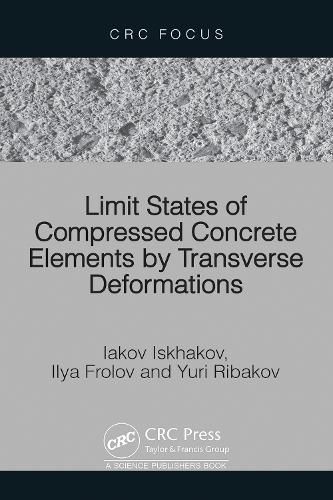Readings Newsletter
Become a Readings Member to make your shopping experience even easier.
Sign in or sign up for free!
You’re not far away from qualifying for FREE standard shipping within Australia
You’ve qualified for FREE standard shipping within Australia
The cart is loading…






The theoretical stress-strain model for compressed concrete (Iskhakov and Ribakov, 2018), is based on the structural phenomenon and requires no empirical coefficients. It includes such main parameters of concrete behavior as stresses and strains at the border between the elastic and non-elastic behavior, ultimate elastic strains and stresses and strains at the end of the post-peak region. Particular attention was focused on the descending branch of the stress-strain diagram and on concrete elastic and plastic potentials that are important for dynamic response of concrete element section and for concrete creep.
The book presents experimental and numerical results confirming this model. It deals with experimental verification of theoretical models of cracking and failure scheme for cylindrical specimens. The importance of using transverse deformations for analysis of initiation and development of inelastic deformations under high loading rates is verified. The experimental and numerical results are in good agreement with the theoretical ones, which significantly reduces the number of empirical coefficients in compressed concrete elements design.
$9.00 standard shipping within Australia
FREE standard shipping within Australia for orders over $100.00
Express & International shipping calculated at checkout
The theoretical stress-strain model for compressed concrete (Iskhakov and Ribakov, 2018), is based on the structural phenomenon and requires no empirical coefficients. It includes such main parameters of concrete behavior as stresses and strains at the border between the elastic and non-elastic behavior, ultimate elastic strains and stresses and strains at the end of the post-peak region. Particular attention was focused on the descending branch of the stress-strain diagram and on concrete elastic and plastic potentials that are important for dynamic response of concrete element section and for concrete creep.
The book presents experimental and numerical results confirming this model. It deals with experimental verification of theoretical models of cracking and failure scheme for cylindrical specimens. The importance of using transverse deformations for analysis of initiation and development of inelastic deformations under high loading rates is verified. The experimental and numerical results are in good agreement with the theoretical ones, which significantly reduces the number of empirical coefficients in compressed concrete elements design.